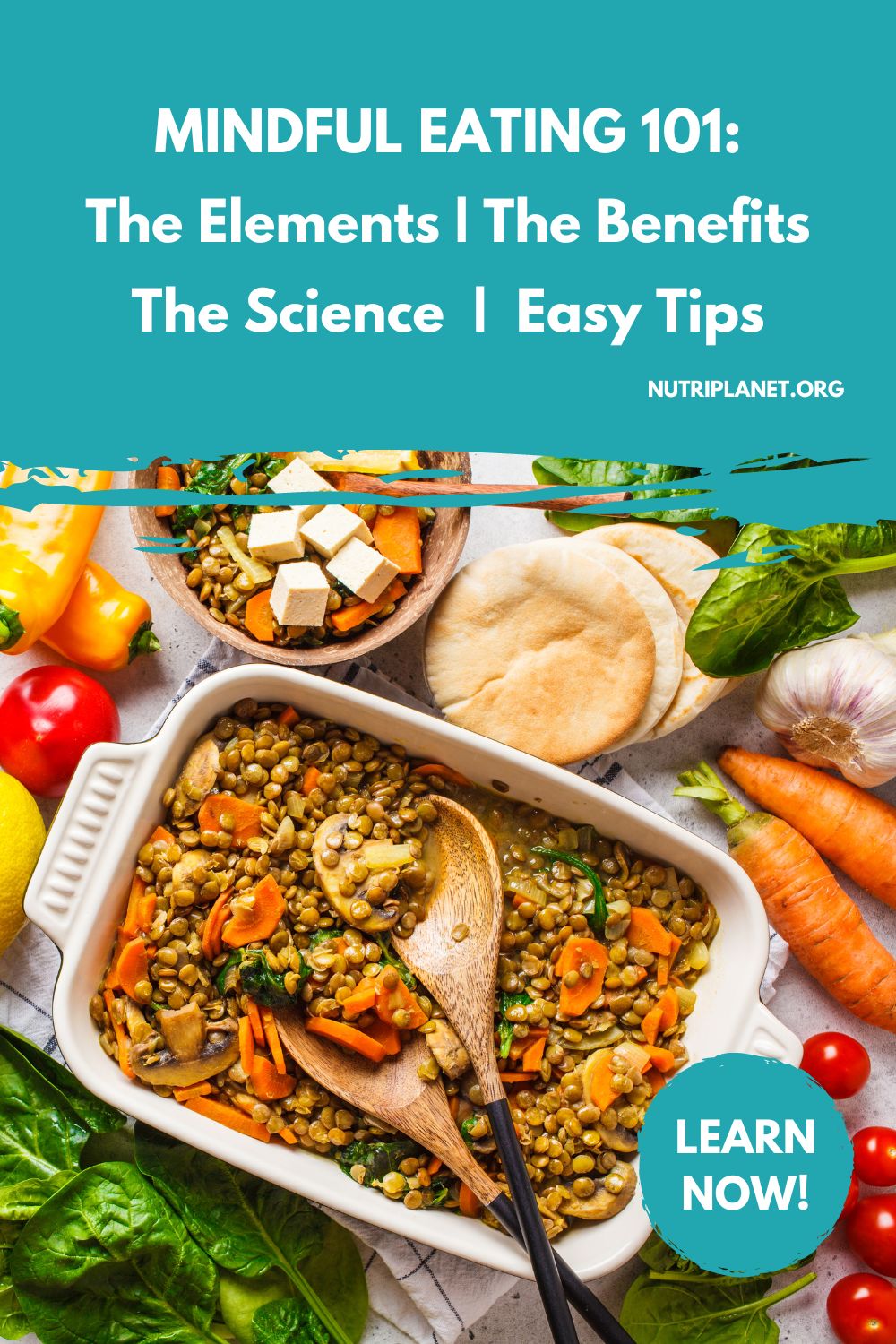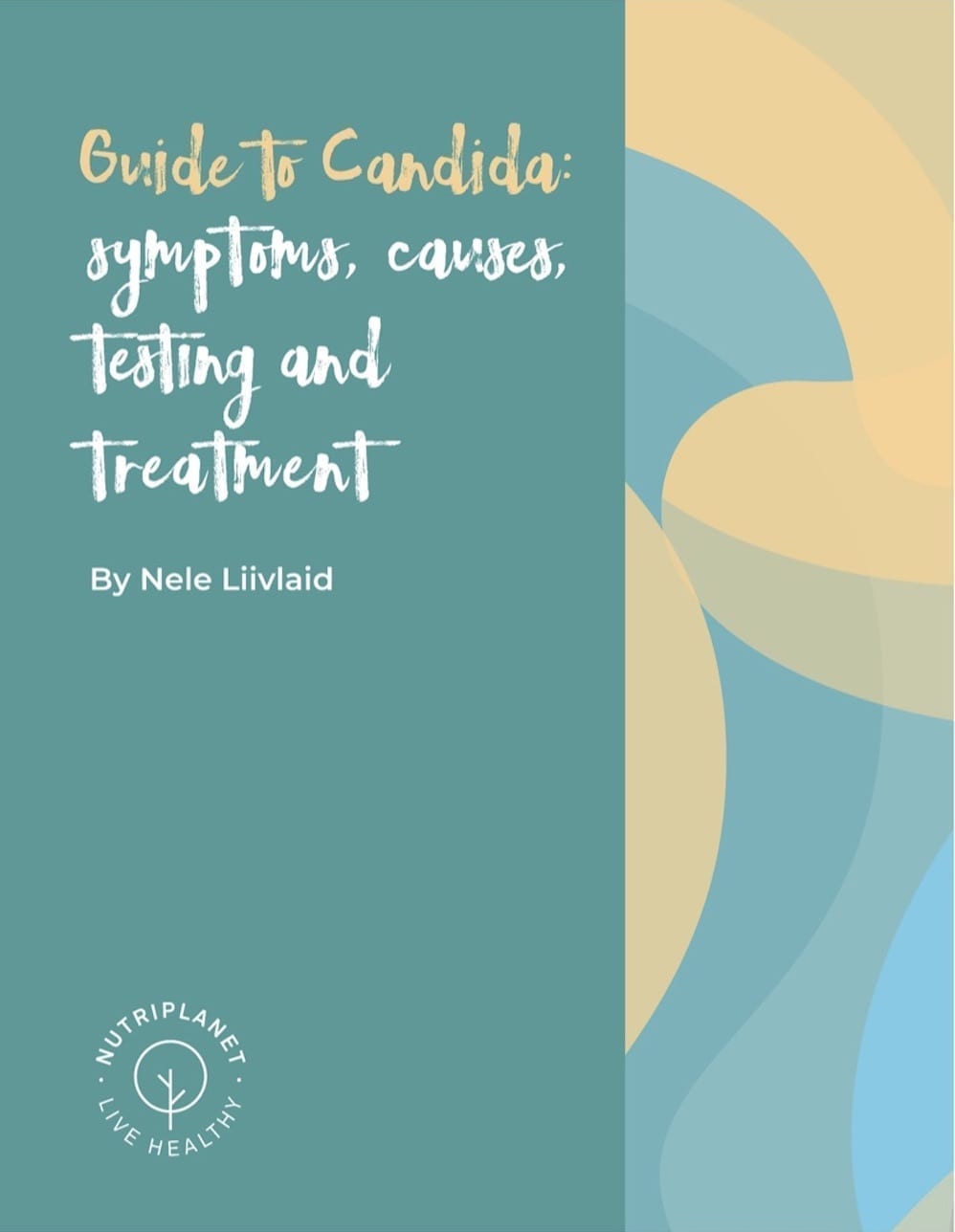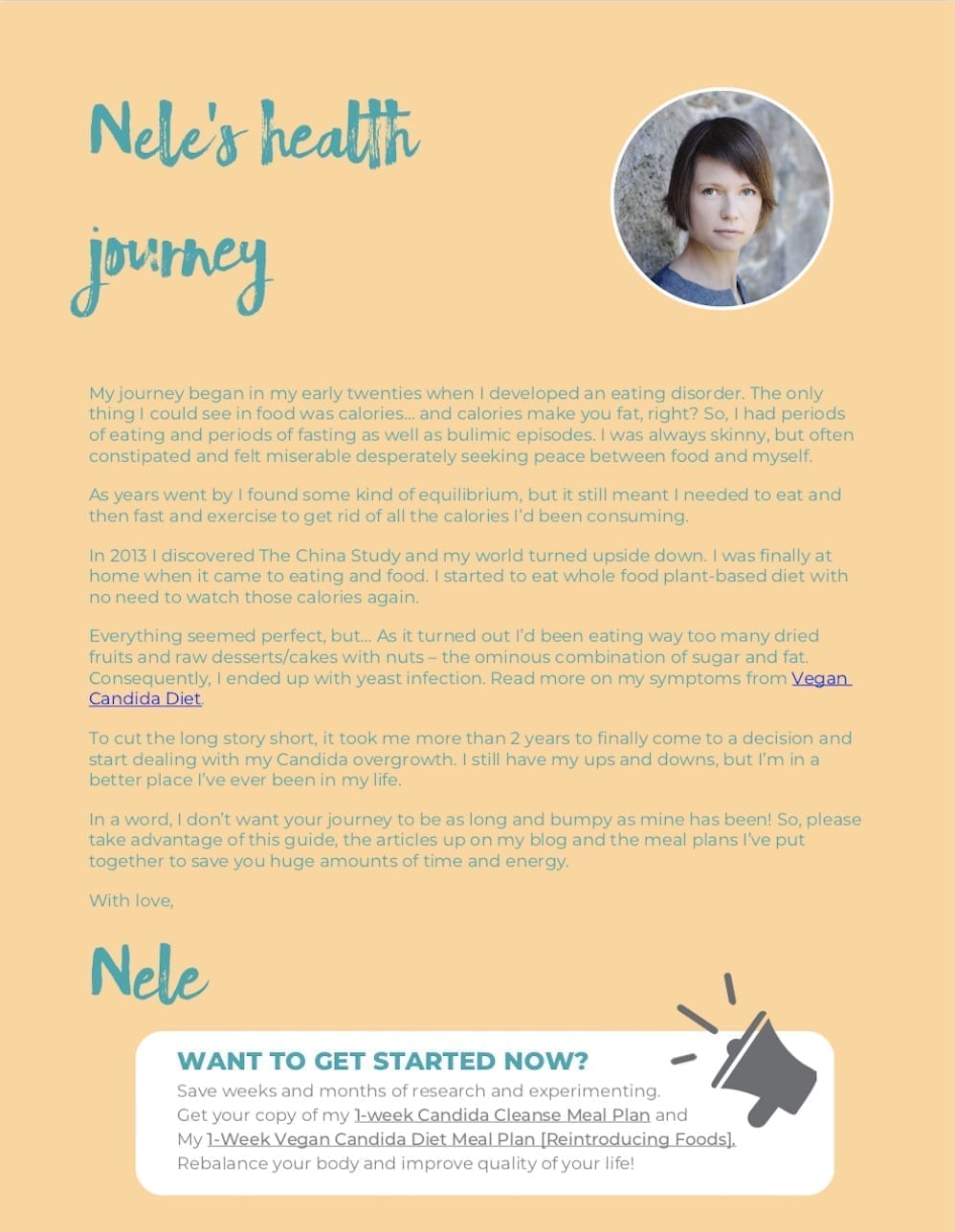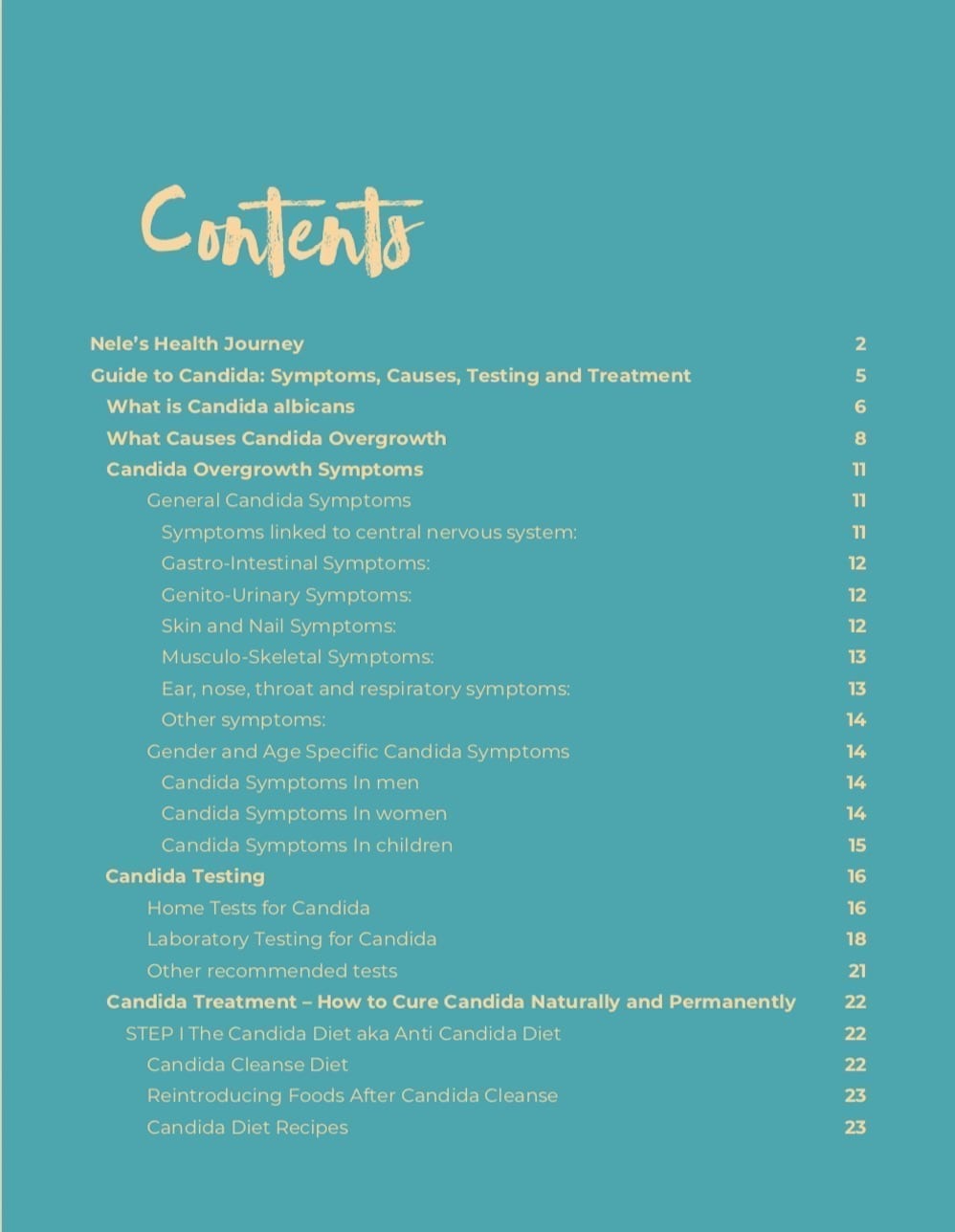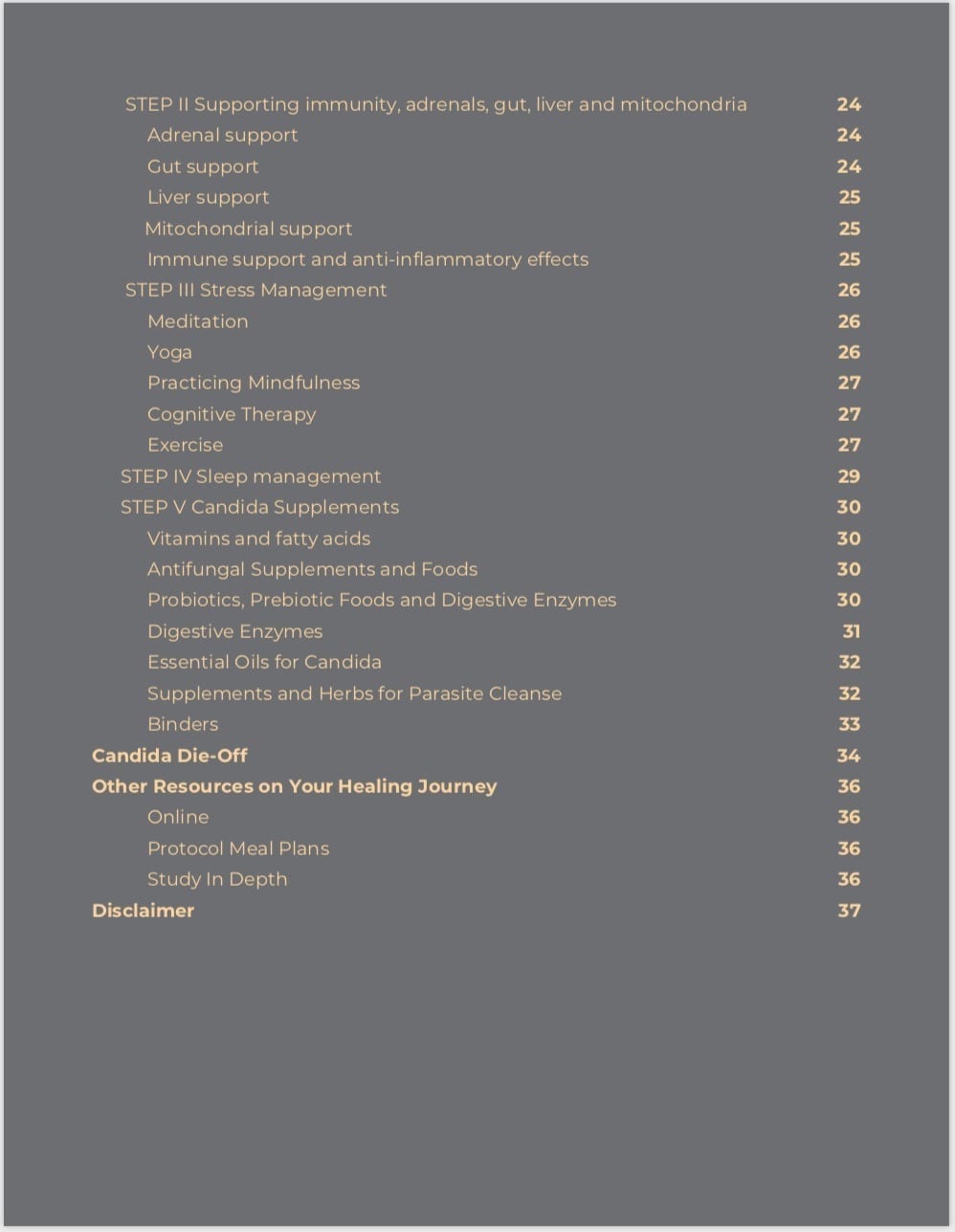In today’s fast-paced world, it’s easy to lose sight of the intimate relationship we share with our food. Often, we find ourselves eating in a rush, distracted by our screens, or simply lost in thought. But what if we could change that? What if each meal became an opportunity to nourish not just our bodies, but our minds as well? Welcome to the art and science of Mindful Eating.
In this post, we explore what it truly means to eat mindfully, investigating its essential components and the profound benefits it brings. We’ll also demystify the science behind this ancient practice and offer practical steps to seamlessly integrate it into our daily lives. And, because every journey has its challenges, we’ll arm you with tips to navigate and overcome potential roadblocks. So, if you’re ready to transform your eating habits and foster a deeper connection with your meals, read on.
You’re welcome to listen to this article as a podcast and get more personal insights:
Table of contents
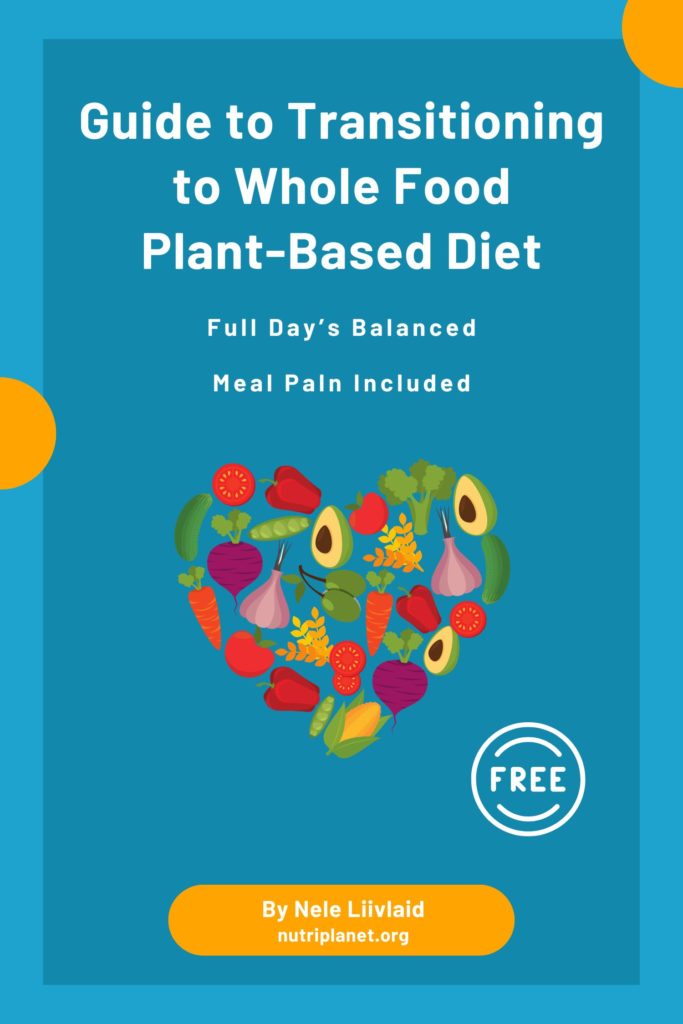
Download my FREE Guide to Plant-Based Diet
Including a full day’s meal plan!
Learn the basics, prepare your kitchen and pantry, compile a balanced meal plan, handle challenges with family and friends, learn the tricks of dining out as well as travelling.
Learn the secrets of weight loss, better health and happiness!
What is Mindful Eating?
What exactly is mindful eating then? In short, it means being mindful about your meals – sitting down with it in a calm environment, actually paying attention to the food itself, chewing properly, being grateful, observing the tastes and your body’s sensations as opposed to mindless eating when you’d gulp down your food real fast while driving, walking, working, scrolling, watching TV and whatnot.
Let’s dive deeper into the elements of mindful eating.
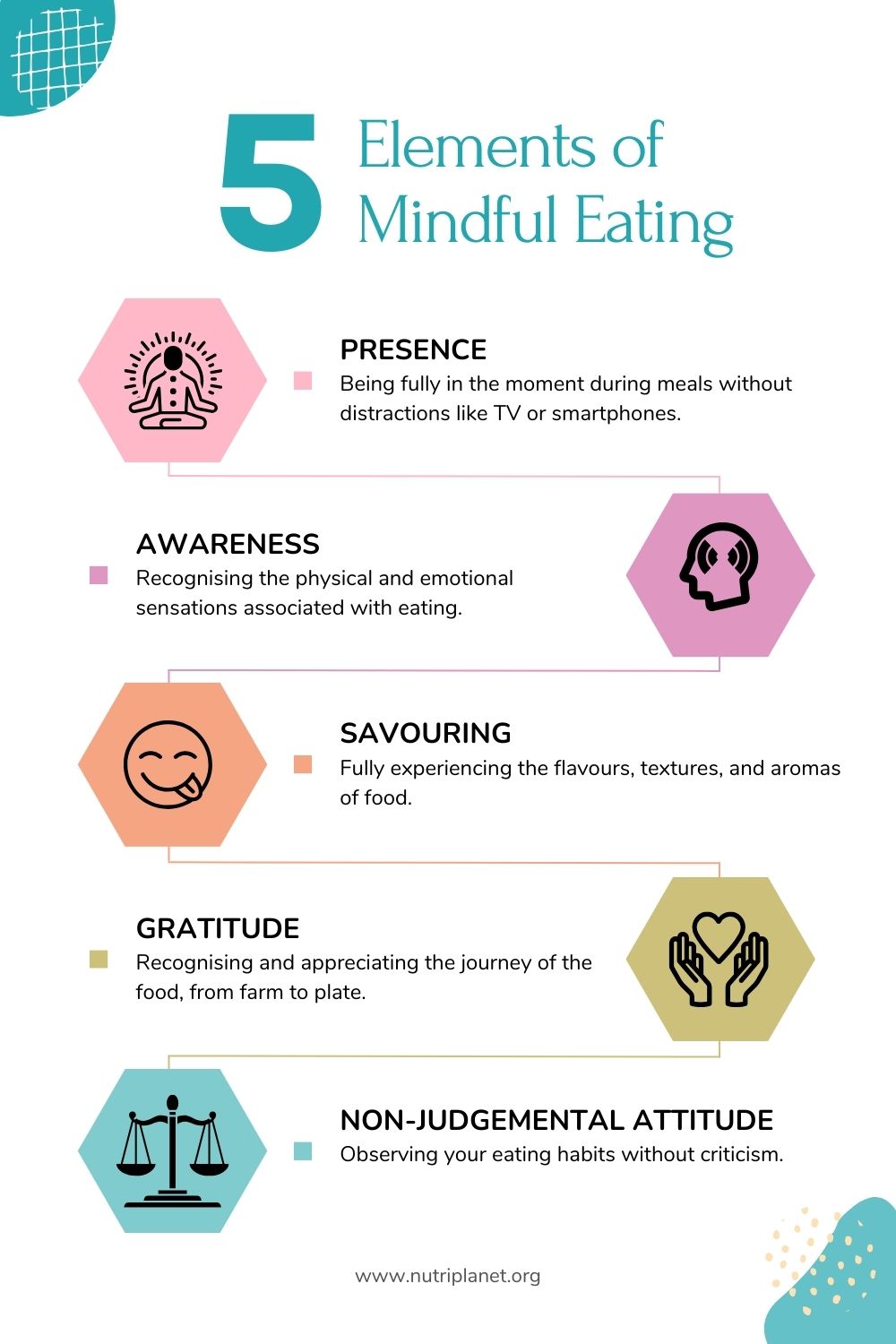
Components of Mindful Eating
Relaxed State
First, you need to be in a calm and relaxed state before you start to eat, that is, your parasympathetic nervous system aka rest-and-digest has to be activated otherwise your body is not opted for digestion. So, if you’re very tired or angry (just had an argument with someone), wait until you calm down before eating. How do you do that?
There are various techniques to help activate the rest-and-digest – for example, deep breathing – when you intentionally slow your breath you let your body know that everything is okay, and you activate the PSNS. Inhale for a count of 4. Hold the breath for a count of 4. Exhale for a count of 4. Repeat up to 10 breaths. Increase to a count of 6 if you want to deepen the practice.
Other techniques include meditation, yoga or other type of exercise, massage, humming and singing (especially chanting mantras). You can learn all about that in my previous episodes about the benefits of humming and mantras. [1]
Even if you already are in a calm state, it’s good to take a few deep breaths and maybe wait for a couple of minutes observing your food and dip into gratitude before you dig in.
Presence
Now that we are calm and ready to start, let’s check if we’re fully present. Is it just you and your food or is something distracting you, like phone, TV, computer. Some say also other people and conversations can be disturbing.
My take on this is you need to choose which conversations with whom you have during a meal. A constructive business meeting or negotiations is probably not the best idea but a heartfelt conversation with a friend (given that you don’t forget to chew of course) provides a nice and relaxing environment and lets the digestive juices flow.
Awareness
OK, we are calm, fully present and have started eating our meal. Next comes awareness. Recognise the physical and emotional sensations associated with eating. How does the food make you feel physically and emotionally?
Savouring
Simultaneously with awareness comes savouring. Thoroughly chewing and fully experiencing the flavours, textures, and aromas of your food. Let me tell you, when you start chewing your food, you begin to delay the swallowing and therefore enjoy each bite more. They say that 26 times is enough but for me personally, depending on what I eat, I sometimes chew 50 or even more times. I stop when I feel that I can’t take it any further.
Gratitude
Now that you’ve finished your meal, it’s time for gratitude. Recognise and appreciate the journey of the food, from farm to your plate. Maybe you grew the food yourself. I just heard a fascinating concept about that and in my world, it totally makes sense. They say that when you plant the seeds yourself, putting your hands in the soil, you communicate with the plants and Mother Earth, sharing information about your health state. The plant will then provide you the exact cocktail of nutrients that your body needs to thrive. I think it’s fascinating and supports the idea that Mother Earth is here to provide us with the best nutrition, if only we didn’t fuck things up for the planet and for us. Among other things, I mean, today, most of the food we eat, has been planted by machines, so there’s no input for the plants. An energetical link is missing. Also, if you grow food for your family, everyone should get their hands dirty so that the whole family’s energy ends up in the soil where the plants grow.
Non-Judgement
A final aspect about mindful eating is not being judgmental about your eating habits. Observe yourself without criticism. You can’t be perfect all the time – I know I am not. I still have that dark chocolate while I eat but it is still possible to be more mindful about it.
Benefits of Mindful Eating
Let’s talk more about the benefits of mindful eating.
- The first set of benefits are Physical: you’re rewarded with improved digestion, better nutrient absorption, you manage your weight better and reduce overeating.
- Then come the Emotional advantages: by being mindful about eating you reduce emotional eating, your mood is more stable, and overall, you enjoy your meals more.
- Thirdly, you can experience Mental avails: you will better differentiate between real hunger vs. emotional cues, which in turn, increases your self-awareness, and breaks you free from negative automatic habits.
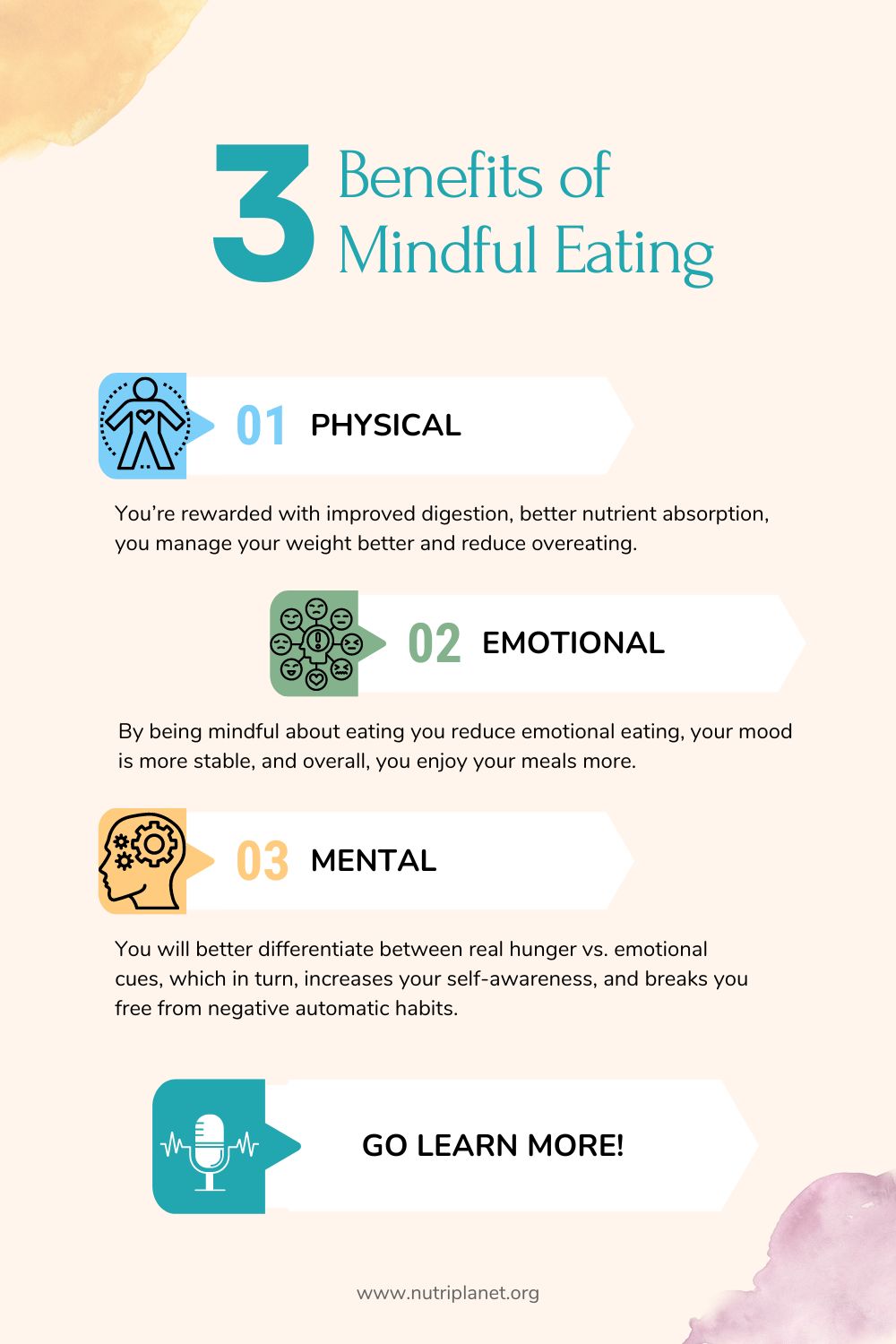
The Science Behind It
Okay, very well, you have all those great benefits but what exactly is behind mindful eating, what the science says.
Brain Chemistry
Practicing mindfulness consistently can change the way you think, feel, and act—because it can literally change your brain.
Our neural pathways are continually and automatically adjusting through a phenomenon called neuroplasticity (neuro-, meaning relating to nerves or the nervous system, and plastic, meaning easily shaped or moulded).
So, neuroplasticity is the capacity of the brain to reorganize its connections based on experience.
Every new experience or challenge, from hurting your toe to walking through unfamiliar streets, forces the brain to rearrange its synaptic connections. And the more you do something, the more established—and less new—these connections become. In other words, repetition makes a behaviour automatic.
Studies show that mindfulness helps focus on the present moment without judgment. Therefore, it’s become a popular method for healthier eating – more fruit intake and less cravings for unhealthy foods. When we are aware of our feelings like hunger and fullness, we can better control our food intake. Thus, this approach can lead to weight loss. When we’re mindful, we notice and manage our reactions to tempting foods better, which makes it easier to avoid them.
In a study, participants were divided into 2 groups – those you received an audio file on ‘Mindfulness Breathing Meditation’ lasting approximately 10 min whilst those in the control group received an audio file on “Natural History of Selbourne” also lasting approximately 10 min.
Both groups were asked how hungry they were, and they underwent a visual task. They were shown LED (low-energy density) and HED (high-energy density) foods side by side and their eye gaze was recorded. The study found that people who practiced mindfulness meditation were more mindful than those who didn’t – surprise-surprise! They also paid more attention to low-energy foods, while the other group focused more on high-energy foods. Hunger and BMI didn’t significantly affect the results. This study was the first of its kind, but its findings match other studies on eating habits. [2, 3, 4]
Digestive System
How can mindful eating improve digestion and nutrient absorption?
As already discussed in the Stomach Acid article, simply thinking about food, and gazing at it before you start to eat, gets your digestive juices flowing, particularly stomach acid, which in turn signals pancreas to release digestive enzymes. Stomach acid is also required for the absorption of certain micronutrients. Hence, if you’re low in stomach acid the nutrients won’t get assimilated, and protein won’t be broken down as efficiently.
Why do you need to be in the “rest-and-digest” mode that is have your parasympathetic nervous system (PSNS) activated when you eat?
PSNS is part of autonomic nervous system, that is it’s nor under your control. It regulates your heart rate, blood pressure, digestion, urination and sweating, among other functions. It also balances your sympathetic nervous system. While your sympathetic nervous system controls your body’s “fight or flight” response, your parasympathetic nervous system helps to control your body’s response during times of rest, also called “rest and digest” or “feed and breed”. [5]
How does it affect our digestive system?
PSNS diverts energy to help you digest food. It also tells your pancreas to make and release insulin, helping your body break down sugars into a form your cells can use. It even has a say in how salivary glands produce saliva which is crucial for proper digestion.
PSNS also enacts peristalsis, or the movement of the stomach and intestines. It regulates the release of bile to digest fats. Furthermore, it also plays role in waste removal: It relaxes the muscles that help you control when you pee or poop. [6]
Psychological Impact
After having talked about brain chemistry and digestive system, let’s dive into the psychological impact. How slowing down and being present can help us differentiate between emotional and physical hunger.
First, let’s make things clear – what is emotional eating and physical hunger? How do we define them?
Emotional eating occurs when you eat food to fulfil your emotional needs instead of your physical needs. For example, you eat when you’re bored, or to cope with negative emotions. It only feels good when you’re eating but you feel even worse later.
Physical hunger is your body telling you that it needs nutrition. It’s easy to notice because it starts gradually and is often felt from within your stomach. Unlike when eating emotionally, you’re usually consider a variety of foods instead of being fixated on only one type. With being mindful you naturally steer towards healthier foods and more balanced meals that will nourish your body instead of giving short-lived instant gratification. [7]
Easy Steps to Eating Mindfully
Okay, you now know what mindful eating is and all the benefits that come with it but how you can actually start doing it every day? I recommend you start with these steps:
Environment
Firstly, create a suitable environment. Have a dedicated eating space. For example, only eat behind your dining table. I can attest to that. Having worked from home for years and years, constant snacking while working became a real problem for me at some point. So, I moved eating to dining table and started working in the study upstairs rather than being in the living-room next to kitchen all the time. This change has helped improve my eating habits as well as productivity and focus.
In addition to designated place, remove all the distractions – for example, don’t have your phone next to you on the table when you eat. I know, harder to do than say but try at least and it will get easier as you go along. If it seems too difficult at first, try a transition with relaxing and entertaining podcast for example but avoid the ones that need high level on concentration so that you forget about eating.
Rituals
Secondly, involve rituals. For example, start your meals with a moment of gratitude and a deep breath. Think about how this food arrived to you and how lucky you are to have it in front of you. Contemplate on the beneficial effects of this food on your body.
Sensory Eating
Next, practice sensory eating. Try to have at least one meal a day alone in silence, focusing on all the sensory experiences that the food offers. Perceive the smell, texture, and taste and sense how it moves down into your stomach and how it feels there.
It helps to put the fork or the spoon down between bites to slow down the eating pace. If you can’t do one meal a day, try every other day or whatever works for you. Remember, it’s about progress not perfection. It would be counterproductive to start feeling stressed about not eating mindfully – and that’s not the point of mindful eating, right?
Check-Ins
One thing that you can do during a meal are check-ins. Every now and then check in with your body to recognise fullness cues. Do you really need to keep going or maybe it’s enough? If you’re not sure, wait for a few minutes and clarity will come.
Mindful Swallowing
Make sure you chew adequately and be aware of the swallowing process.
Now, chewing is so important because the digestion of carbohydrates begins in the mouth. Your salivary glands secrete the enzyme called amylase that does its magic even before you swallow. And it doesn’t end there, chewing also stimulates more secretion of saliva and stomach juices, therefore creating a better ground for digestion.
So, if you gobble your food down too fast, the digestion of carbohydrates remains incomplete, and you may experience digestive discomfort and the nutrients won’t assimilate as well.
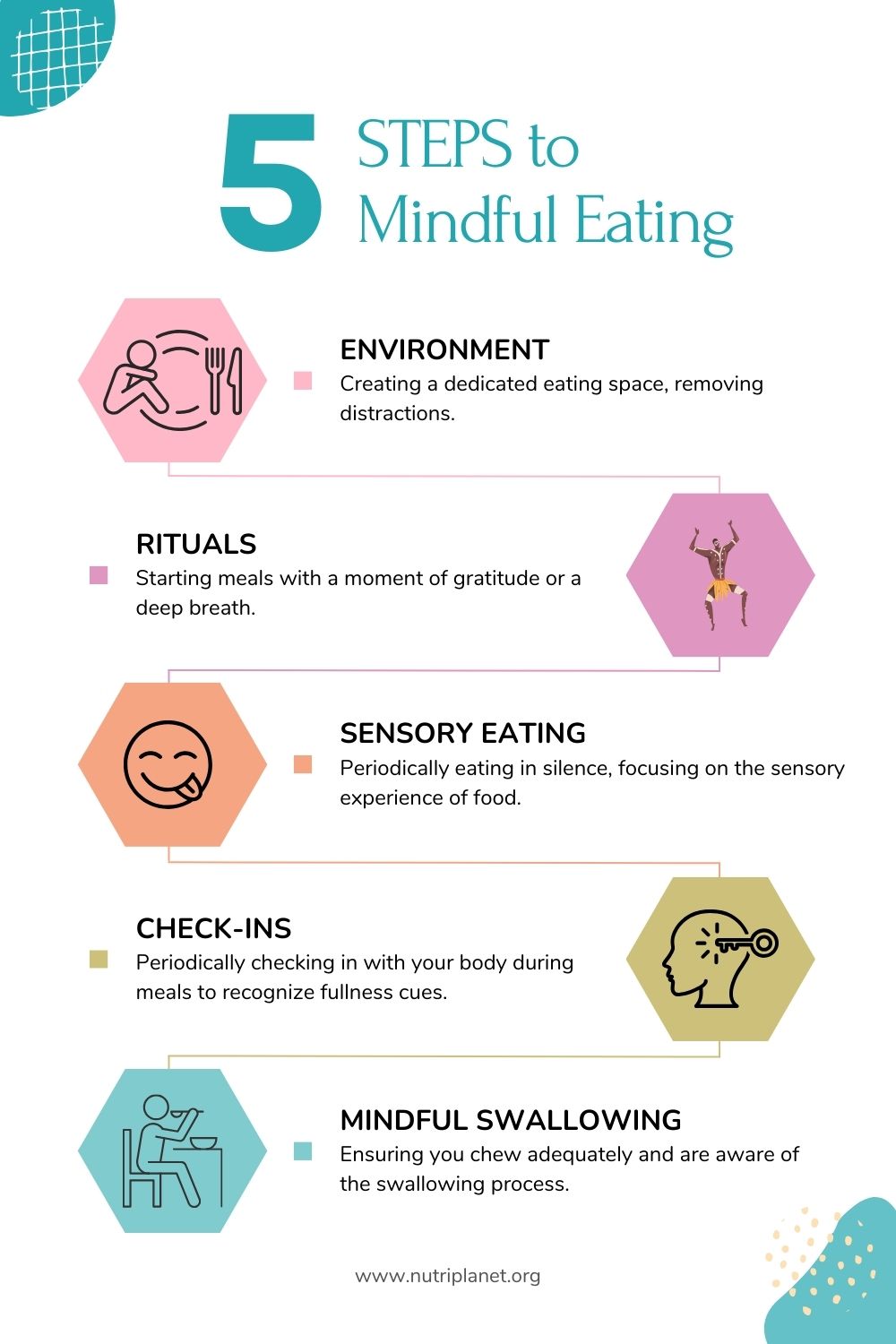
Challenges and Tips to Overcome Them
I understand that it’s impossible to be perfect all the time – maybe someone is, I don’t know.
My most mindful meal of the day is breakfast – I prepare it for myself very mindfully and I eat it alone, chewing every bite thoroughly. I must admit I very often I have a podcast on but it’s something spiritual and uplifting to create the right mood and motivation for the day.
Lunch is more difficult – I’m usually in the workflow and just need to fuel myself. But now when I moved my work upstairs, I manage to keep eating and working separate – I go downstairs for a bite and go back upstairs with a cup of tea and a sweet bite, like dark chocolate. I try to take a break from work every time I take a bite though. I stop for a moment and savour it. Otherwise, where’s the enjoyment, right?
During social gatherings, when there’s conversation going on, I try not to swallow my food faster just to be able to say something – there’s plenty of time and it’s possible to time your bites for when someone else is talking.
We also try to have one meal a day as a family. It doesn’t happen every day though as sometimes my hubby gets home too late and I want to eat quite early, around 5-6pm. In such cases I just sit with him when he finally has his meal, and we have this time together anyways. I love to see him taking the mindfulness in more and more – how he sits down with his colourful bowl that I’ve prepared with love and all the good intentions, looks at it with gratitude and takes a few deep breaths before he digs in.
The Main Takeaway
Mindful eating certainly transforms our relationship with food. When we allow ourselves to be in the present moment, we not only savour each bite but also become receptive to our body’s signals. This awareness helps with overeating, reduces emotional eating, and makes us appreciate the nourishment we receive. It is not just about eating less or healthier; it’s about having a connection between our mind, body, and the food on our plate.
Challenge Yourself
How about a small challenge for you?
If you’re a total rookie, for tomorrow pick just one step of mindful eating that I covered. Either creating the environment, incorporating a ritual, going into sensory eating, checking in with your body when eating, or thorough chewing and mindful swallowing. Try just one of these even if it’s just during one meal and evolve from there. The next day, try the same step with 2 meals or include another technique and so on. Before you know it, you’ve mastered mindful eating – for most parts at least – and this is what’s important and matters. You don’t have to be perfect all the time. I have a tendency towards perfectionism, but at least I’ve come to a point where I realise that and can catch the thought and can ground myself before it goes too far. You can do it too!
Feel free to PIN the below image!
